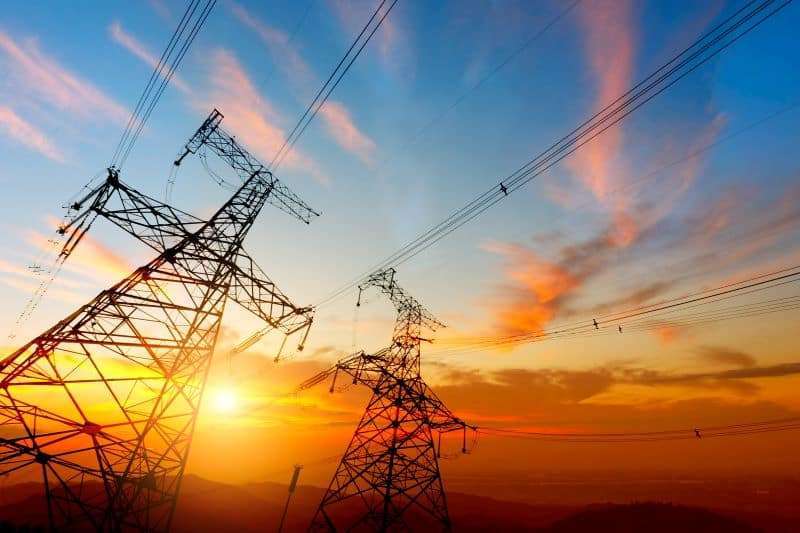Can I Get Energy Assistance if I’m Considered Low Income
Having energy is a necessity. You may need heating, gas, and electricity, a better roof over your head, and compensation for property damage. But if you’re beneath the poverty line, you may wonder if there is a government program that can help you get heating or cooling, especially during summer or winter.
The short answer is yes, you can get energy assistance if you are considered low-income. All 50 states have an energy assistance program in some form. Otherwise, the offerings may vary with your area. If you ask for energy support after a natural disaster or live with someone sensitive to temperature, you are more likely to get priority assistance.

This article will detail everything you need to know about low-income energy assistance for most of the United States. We will cover what energy assistance means, what programs are in place to help low-income households, and how to know if you qualify. And even if you don’t qualify, there are some things that anyone can do to save a little on their energy bill.
The good news is that plenty of government assistance programs provide low-income households with energy, especially in summer and winter. These services include:
- Heating in the winter
- Cooling in the summer
- Paying energy bills
- Weatherizing
Yes, some programs can pay your energy bill and even provide heaters or air conditioners if you’re in a pinch. But there may be some energy assistance you have yet to think of. Everything seems to center around heating and cooling; why is that, and what else is out there?
Why Heating/Cooling?
There are many kinds of energy assistance out there. They range from making your house more energy-efficient to giving you heating/cooling appliances and paying your bills. So why does every piece of information focus on heating/cooling?
Much of the literature around energy assistance centers around heating/cooling because outside temperatures can be deadly in summer and winter—especially for children, seniors, and individuals with disabilities. Households with at-risk persons usually get priority when it comes to LIHEAP services. It’s the most common reason for needing energy assistance.
But several government services keep low-income families from worrying about other facets of energy assistance. Pages like this detail utility energy assistance and offer helpful tips for trimming your electric bill.
Some low-income households, however, need more than just tips. The two most common forms of energy assistance show as LIHEAP and WAP. So let’s take a closer look at how those major government programs can help.
What is LIHEAP?
The Low-Income Home Energy Assistance Program (LIHEAP) provides heating and cooling, as well as other energy assistance, for low-income households—with a few catches. It is part of the U.S. Department of Health and Human Services Administration for Children and Families.
Here are the primary services LIHEAP covers:
- Energy bill payment
- Crisis assistance
- Weatherization
- Energy-related home repairs
LIHEAP services can vary based on seasonal availability (they are busiest during the winter) and what your community’s LIHEAP program has to offer. As a result, you are not guaranteed to get LIHEAP services, especially during times of high demand. But note that LIHEAP can also help you pay your utility bills if you have an eviction notice too!
Please check the website for more details, including what documents you might need to apply to the program. Usually, you will need your SSN and a document with your address on it (bill, rent payment, etc.). If you want assistance paying your utilities, you may also need an eviction notice or other documentation.
What is the Weatherization Assistance Program (WAP)?
The Weatherization Assistance Program is another government-funded way low-income households can get energy assistance. The U.S. Department of Energy manages it. Although it seems obvious what it does from the title, we need to clarify at least one thing before going on.
Before discussing the Weatherization Assistance Program, we must ask what “weatherization is?” In short, “weatherization” ensures a house is protected from weather and is more energy-efficient overall.
Types of weatherization include, but are not limited to:
- Installing insulation (on pipes, in walls, etc.)
- Replacing lights and appliances with energy-efficient models
- Making sure a house has adequate ventilation.
- Assessing fire hazards
These things not only make your house more energy-efficient but also make it safer. Weatherization also factors in mold, mildew, and other house hazards that may not come to mind when one thinks “weather!” Again, check your local (state, county, town) websites for any weatherization programs in your area.
How Are the Two Programs Different?
Now that we know these two programs exist, when should we use each? It’s easier. One is preventative; the other is reactive. If you want to save money on your energy bill and ensure your house is safe, you may want the weatherization assistance program.
However, weatherization is not helpful in emergencies. For example, insulation will not help you pay the rent or if the heater shorts out in the middle of winter. An emergency warrants LIHEAP.
By the way, you don’t need to be low-income to “weatherize” your house. Weatherization can save anybody money on their energy bill—some states, like Louisiana, offer classes on weatherization. Check your community’s website for details on programs like this.
Think of WAP as prevention or improving your house’s energy efficiency and LIHEAP as a reactionary emergency measure. They are good in different situations. Use LIHEAP if you need assistance immediately and WAP if you want to plan for a greener house.
How Do I Know if I Qualify for LIHEAP or WAP?
You need a certain income level to qualify for LIHEAP or a WAP. Some exceptions are made in winter and summer when temperatures can get dangerously hot or cold. But mostly, you need to make below a given amount.
This varies, albeit slightly, by state. In Illinois, for example, you need to be a resident of Illinois, need financial assistance with home energy costs, and have a household income below $20,385 per year. In addition, in Illinois, people on the Social Security Income (SSI) and Supplemental Nutrition Assistance Program (SNAP) qualify for LIHEAP automatically.
These criteria vary by state, so please check your state’s website for more information. If you are on another social support program (SNAP, SSI, etc.), you probably qualify, but it can’t hurt to make sure.
What Affects My Ability to Qualify?
The biggest issue with answering “can I get energy assistance if I’m considered low-income?” is “how much do you have, exactly?” While the U.S. Census Bureau dictates the poverty line, liquid assets matter when you need an air conditioner.
The following points can all be variables when looking for energy assistance:
- Household income
- Liquid assets
- Appliances in a house
- Other programs
You may need to pay a fee if you are above the poverty line, so it’s essential to know precisely where you fall before seeking government assistance. Check the appropriate websites for details about energy assistance in your area!
Are There Any Other Programs I Should Know About?
After reading about the two big programs, you might wonder if there are other programs that low-income households can use to keep the heat on. Of course, there are, but they are only government-assisted and may have up-front costs.
You can get some assistance from your insurance provider. Some weatherization options, such as cladding and siding, are not covered by the usual WAP. If you don’t have insurance due to being low-income, don’t bother with this, but if you have insurance, emergencies like this are what you’ve been paying for.
Check your local government web pages for discounts on solar panels and other energy efficiency measures. They will vary significantly by state, county, and town. The government will only tell you about these if you look for them.
Finally, keep your eyes open for companies like Sealed. While not government-funded, they don’t just weatherize your house: they update your outdated HVAC systems. So if you plan on weatherizing your house and think your WAP could have done better, companies like Sealed may be a great alternative.
Conclusion
When answering the question, “can I get energy assistance if I’m considered low-income?” the answer is usually “yes.” The LIHEAP and WAP exist to ensure low-income households have heating and air conditioning when the temperature hits extremes. Please check your state’s LIHEAP and WAP websites for more details. Stay calm or warm now that you know!
Save Money on Your Wireless Phone Service
If you qualify for certain government benefits, you may also be eligible for Lifeline or the Affordable Connectivity Program (ACP). Lifeline and ACP are government-run programs to help low-income consumers receive free or heavily discounted communication services.
Click here to find out more and apply for this valuable benefit.
Get a Tablet for $10.01
If you qualify, you can get an 8″ tablet for just $10.01. Apply here to get started!



